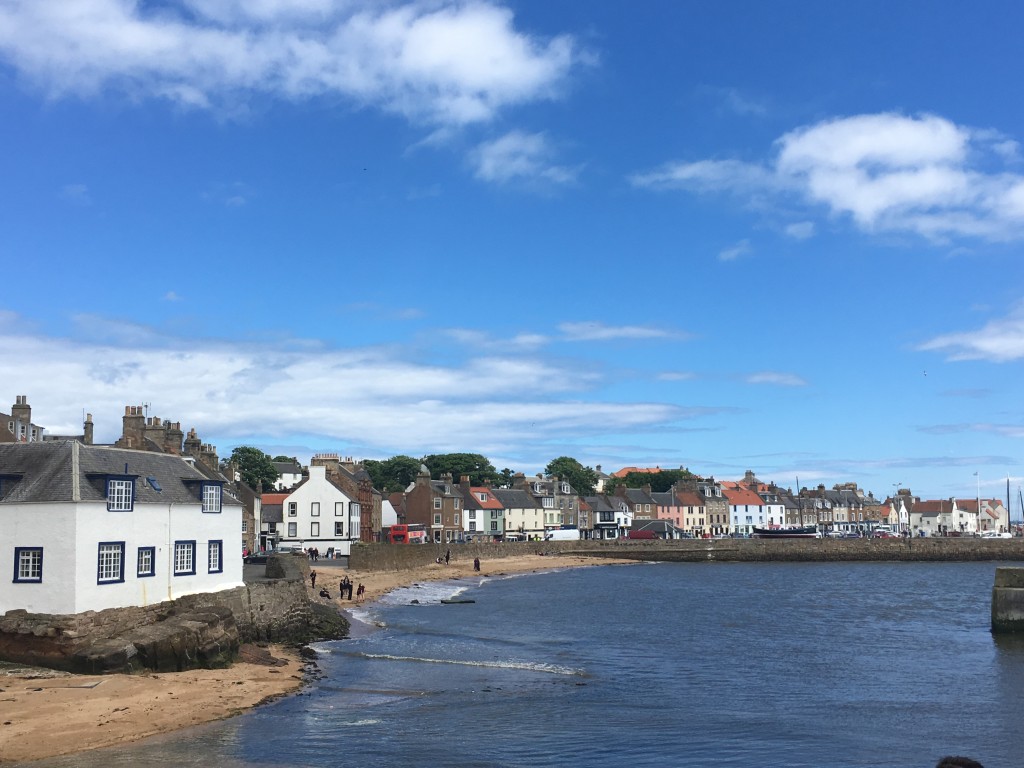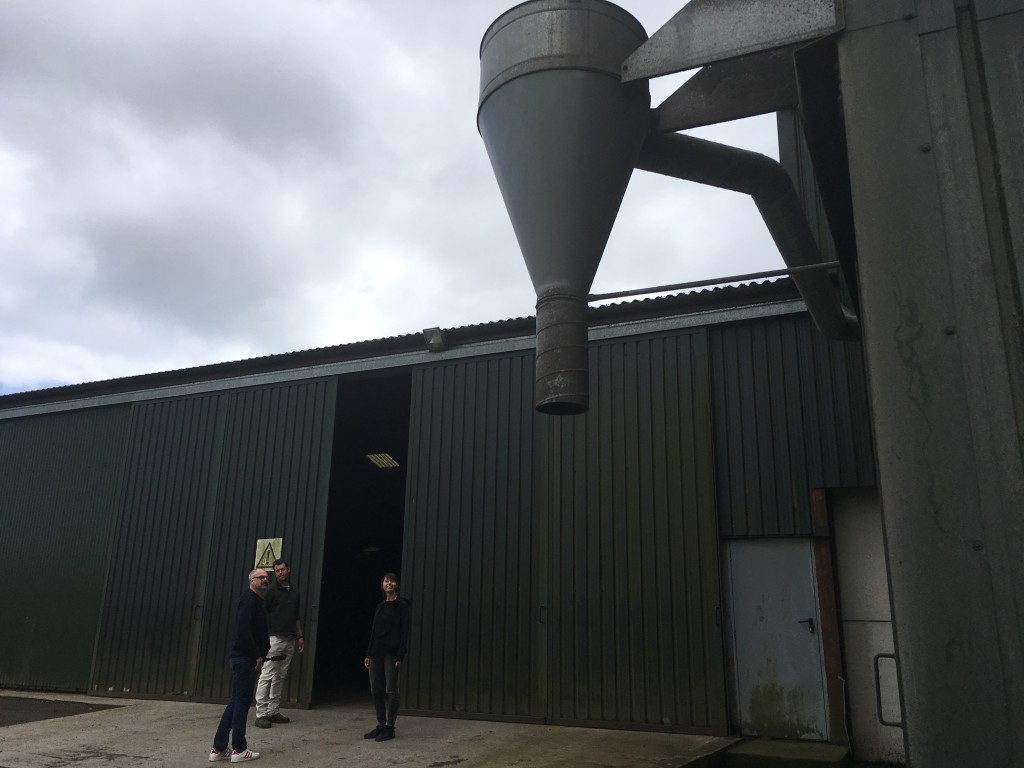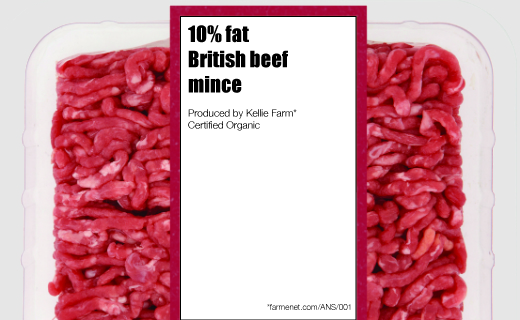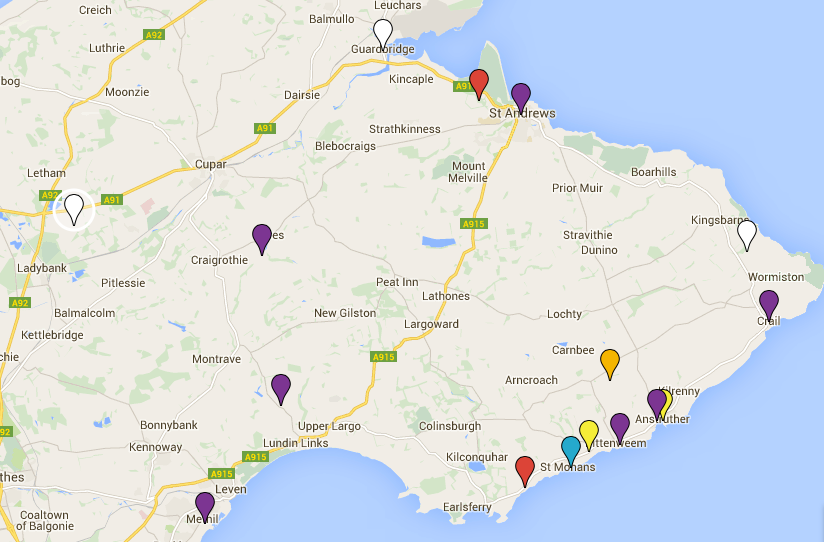I’m in Anstruther (a small fishing village in Fife, Scotland) this week taking part in the second Mozilla Open IOT Studio design sprint. The whole week is organised by Michelle Thorne, the studio director and Jon Rogers who lives in the area. We’re working from an old church adjacent to a graveyard and there’s 40 of us working on bringing the internet of things to a rural town.
I was offered to jump into a farming community brief and as I’ve had the pleasure of working with Wintec over the last years, this seemed like an obvious space to be. We visited the estate of the 14th Baronet of Anstruther who manages lots of land, rents it out to farmers, has converted old farming buildings into hipster-friendly work spaces and is going organic. Not quite your average farmer but it was nice to get close to the action.
One of the first things he told us yesterday morning when we interviewed him was that Tesco and others fake farm names for their brand own labels.
Despite the British sounding names, the “farms” do not exist and the produce is often sourced from abroad.
I’d imagine that this is because there is no such thing as a public farm registry. If you apply to become a farm, it’s information that stays with the government but not something you’d put on a label. Provenance is important in helping consumers make decisions about the food they eat. It’s not just an administrative imperative, it’s a conversation between producers, wholesalers, retailers, restaurants and consumers. Especially when it can kill you if you have allergies. It makes me think that just like we need advocacy around labelling for #iot products, we certainly need it for British-farmed produce.
So I’m developing a very early idea I’m calling Farmnet, which is an open registry for farms which they can use on labelling of their products.
I imagine this to be a space where you can check where that farm is based, if it’s organic or not, if it has an online shop should you want to buy directly from them and what it also sells (many farms have lots of different crops).
This was also after realising there are lots of different organisations around farming, but no publicly accessible database. Even doing a bit of digging around I found more local businesses by Googling my way around the web than one of the many official sites Farma. 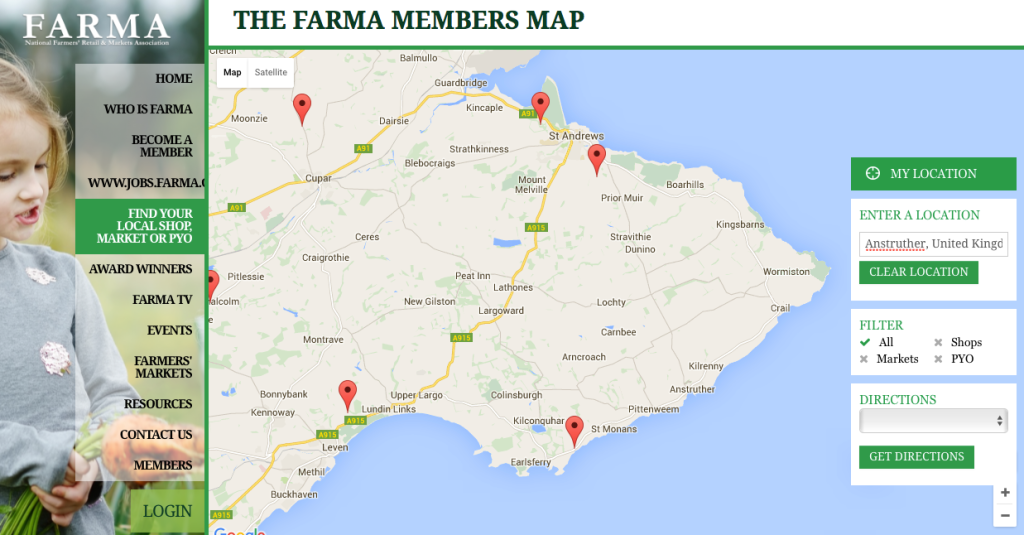
The other reason to have a database is give people an excuse to add to it. Many local farm shops do have an online presence if you know their name already. For many that presence is minimal, the bigger the town, the more likely they are to have an online shop and a responsive website. For many they would rely on local trade and relationships that continue to support a highly seasonal business structure. I was told by
Food for everyone.
Anstruther has many care homes and retired people, making sure they can have access to great local food and not just shop/supermarket bought goods because they can no longer drive is pretty important to the life and health of the town and local economy. There may be a future argument for local food to be cheaper for local people, a kind of local subsidy to encourage farmers to start farmer’s markets very very locally.
Anyway, some thoughts on day 2. If you’d like to give me some feedback or want to talk about this, please drop me a line at alex at designswarm dot com.

